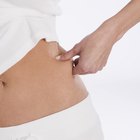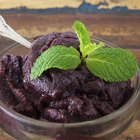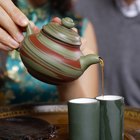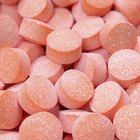
The rooibos bush is a South African shrub that has flat leaves and yellow flowers. The leaves are often dried and used to make a caffeine-free herbal tea that is now widely available in health food stores. While the evidence of this beverage's effectiveness as an acne treatment is largely anecdotal, many people who are looking for a low-cost yet effective acne treatment are trying it.
Causes of Acne
A 2008 article in the German journal "Hautarzt" lists four major causes of acne: excess sebum production; a bacterium called Propionibacterium acnes; inflammation, which is often caused by the waste products of bacteria; and hyperkeratosis. Hyperkeratosis occurs when hair follicles are plugged by too much keratin, which is a protein component of sebum. Any effective acne treatment must address at least one, if not more, of these four causes.
Rooibos: The Testimonials
Several websites devoted to the treatment of acne contain testimonials to the alleged benefits of rooibos tea. People claiming to have suffered from bad skin for years say they have controlled their acne after drinking this beverage or using it as an astringent. However, anyone wishing to try rooibos tea should understand that, as of June 2011, there have been no controlled studies testing the effectiveness of this substance as an acne treatment.
Why Rooibos Might Work
However, there are other lines of research suggesting possible reasons why this plant might benefit some people. A study reported in the October 2009 issue of "Pediatrics International" found that rats given rooibos showed reduced levels of inflammation. Since inflammation is one of the mechanisms underlying the development of acne, if rooibos is able to slow this process, it may reduce the symptoms of acne as well.
How to Use Rooibos
There are two ways to use rooibos as an acne treatment: either by drinking it or by applying it topically. To make the tea, don't boil the leaves themselves. Rather, use 1 tsp. of rooibos tea leaves per 8 oz. of water and pour boiling water over them. Let the leaves steep for at least five minutes, and preferably 10. The tea may be consumed hot or cold, but preferably unsweetened. Obviously, if you are applying it to your skin, you should let it cool to room temperature.
Related Articles

Does Tea Cause Cellulite?

Acai Berry & Acne

Tahini & Acne

What Are the Benefits of Extrapone ...

Benzoyl Peroxide-Free Acne Products

Bitter Melon for Acne

Can Tea Build Collagen & Elastin?

Green Tea for Acne Scars

Seaweed and Acne

Arnica for Acne

Pycnogenol and Acne

The Use of Neem Juice in Skin Care as ...

Fiber Sure by Metamucil Ingredients

Natural Ways to Get Rid of Scabies

How to Use Vaniqa Cream

What Are the Benefits of Ashwagandha in ...

Benefiber Ingredients

What Is Aloe Good For?

What Are the Health Benefits of ...
Calories in Thai Iced Tea
References
Writer Bio
Jessica Ramer began writing professionally in 2000. She has been published in "Macrobiotics Today" and has also written "Charlie Does the SAT Math." Ramer is a Kushi Institute-certified macrobiotic instructor who holds a B.A. in mathematics and a M.A. in psychology from Florida Atlantic University.
Photo Credits
Thinkstock Images/Comstock/Getty Images